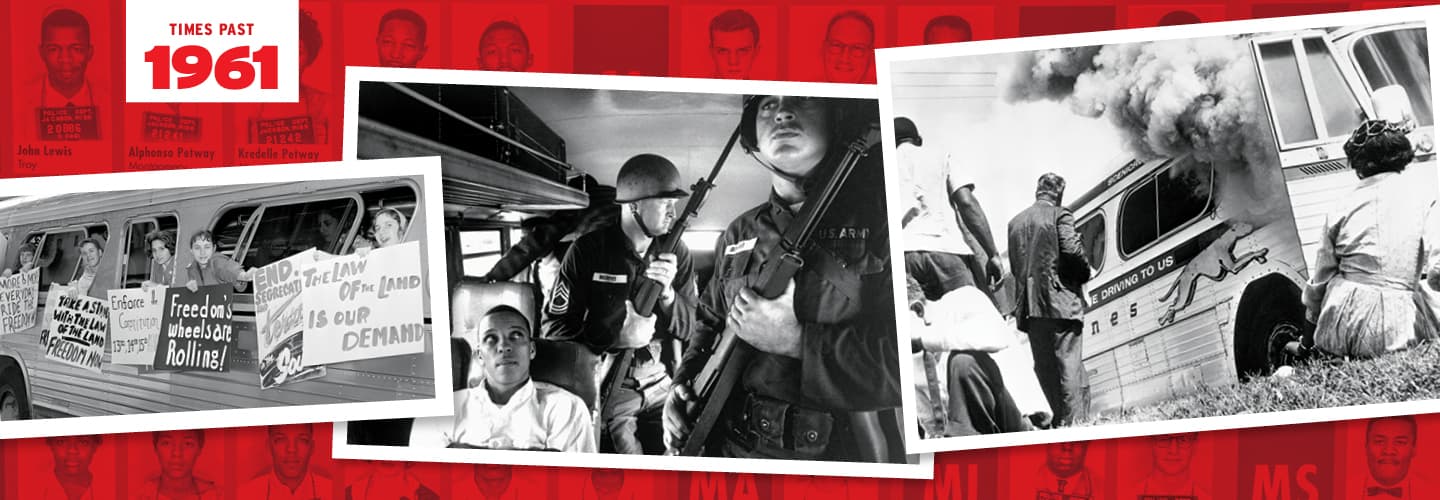A pipe smashed into the back of Charles Person’s head, and he tasted blood.
It was May 14, 1961, and Person, a Black college student from Atlanta, had just gotten off a Trailways bus in Birmingham, Alabama, and entered the bus terminal. He was part of an interracial group of 13 civil rights activists riding from city to city in the South, trying to challenge racial segregation in bus stations.
But a crowd of White men lining the walls of the terminal had not come to welcome them. The men immediately started hurling insults, swinging fists, and attacking with lead pipes. They punched Person in the face, knocking him to the ground before the pipe smashed his skull.
The seven Black and six White activists, including Person, escaped only when a flashbulb went off as a news photographer took the only surviving photo of the assault, before the angry mob turned on him too (see photo, below).
“The flash went off, and it startled them,” says Person, who was 18 at the time and is now 78. “At that point, they just released me.”
None of the White doctors in Birmingham would treat him, so the wound drained to a knot in the back of his neck. He would live with the fist-sized bruise for 35 years before a surgeon removed it.
A pipe smashed into the back of Charles Person’s head, and he tasted blood.
It was May 14, 1961. Person, a Black college student from Atlanta, had just gotten off a Trailways bus in Birmingham, Alabama, and entered the bus terminal. He was part of an interracial group of 13 civil rights activists riding from city to city in the South. They aimed to challenge racial segregation in bus stations.
But a crowd of White men lining the walls of the terminal had not come to welcome them. The men immediately started yelling insults, swinging fists, and attacking with lead pipes. They punched Person in the face, knocking him to the ground before the pipe smashed his skull.
Including Person, there were seven Black and six White activists present that day. They escaped only when a flashbulb went off as a news photographer took the only surviving photo of the assault. Shortly after, the angry mob turned on the photographer too (see photo, below).
“The flash went off, and it startled them,” says Person, who was 18 at the time and is now 78. “At that point, they just released me.”
None of the White doctors in Birmingham would treat him, so the wound drained to a knot in the back of his neck. He would live with the fist-sized bruise for 35 years before a surgeon removed it.

